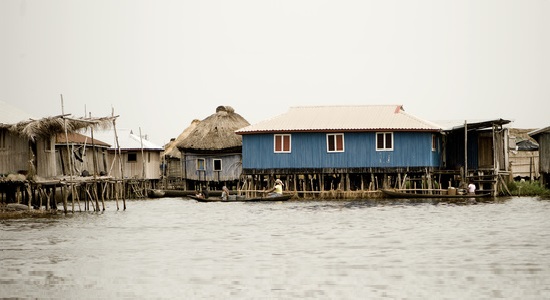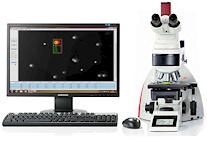An Environmental Investigation in Lagos Lagoon
- Details
- Created: Wednesday, 21 January 2015 10:57
 Researchers from the University of Lagos, Nigeria and King’s College London, UK, have collaborated to investigate the sediment quality of Lagos Lagoon, Nigeria.
Researchers from the University of Lagos, Nigeria and King’s College London, UK, have collaborated to investigate the sediment quality of Lagos Lagoon, Nigeria.
The scientists describe how “economic advancements in developing countries have seen an increase in urbanisation and industrialisation with a rise in the levels of discharge of effluents and municipal waste into aquatic ecosystems. Unfortunately, aquatic environmental regulations in these countries are often rudimentary and the development of environmental monitoring programmes will help identify ecological risks.”
Experts have estimated that over 2000 industries are situated close to Lagos Lagoon and discharge effluents into the water. Lagos Lagoon is also a major harbour for ships importing goods into Nigeria, via the Tin Can Port, and this is another source of contaminants, such as oil and anti-fouling compounds. Previously, a number of studies have illustrated the rise in pollution within the brackish water lagoon based on chemical monitoring of surface waters. For more background information regarding the pollution in Lagos Lagoon, please refer to the papers cited within the original text.
According to the publication, this study is the first of its kind to use the rainbow trout gill-W1 cell line and a suite of in vitro bioassays to assess the environmental quality of sediments at eleven various sites along the southern and western shore of Lagos Lagoon, Nigeria. It is known that sediments are a “chemical sink” for compounds present in industrial and domestic effluents and reflect the historic contamination of water bodies.
The organic solvent sediment extracts were assessed for cytotoxicity and genotoxicity in rainbow trout gill-W1 cells. The sediments were analysed for polycyclic aromatic hydrocarbons (PAHs) and other contaminants such as polychlorinated biphenyls, organochlorine and organophosphate pesticides. Cytotoxicity was assessed using the Alamar Blue assay measuring metabolic cell activity and an unmodified and modified comet assay was used to detect DNA damage. For full experimental information, please refer to the original study.
 The alkaline comet assay showed that all eleven sites caused significant DNA damage and that the extent of the damage was site specific. The measure of oxidative damage to DNA via the formamidopyrimidine DNA-glycosylase-modified comet assay revealed similar results. Comets where analysed using a Leica fluorescence microscope (Leica DMLB 020-519-010 LB30T). DNA damage was scored using the Comet IV capture system (version 4.11; Perceptive Instruments, UK). Fifty nucleoids were assessed per slide, and each sample was analysed in duplicate. All samples were measured blind. The results from both replicates were combined for further analysis. The tail intensity (% tail DNA), defined as the percentage of DNA migrated from the head of the comet into the tail, was used as a measure of DNA damage induced, because it has been shown to be a meaningful end point to assess genotoxicity.
The alkaline comet assay showed that all eleven sites caused significant DNA damage and that the extent of the damage was site specific. The measure of oxidative damage to DNA via the formamidopyrimidine DNA-glycosylase-modified comet assay revealed similar results. Comets where analysed using a Leica fluorescence microscope (Leica DMLB 020-519-010 LB30T). DNA damage was scored using the Comet IV capture system (version 4.11; Perceptive Instruments, UK). Fifty nucleoids were assessed per slide, and each sample was analysed in duplicate. All samples were measured blind. The results from both replicates were combined for further analysis. The tail intensity (% tail DNA), defined as the percentage of DNA migrated from the head of the comet into the tail, was used as a measure of DNA damage induced, because it has been shown to be a meaningful end point to assess genotoxicity.
The researchers concluded that at certain locations in Lagos Lagoon the sediments possess contaminants that are cytotoxic, genotoxic and endocrine disrupting. The scientists also reported that chemical analysis of PAHs showed a gradient of contamination, but the concentrations did not always reflect site descriptions of known effluent discharge and sources of pollution. The dynamic nature of Lagos Lagoon, due to tides and freshwater inputs which widely distribute sediments and contaminants, make it difficult to link the sources of pollution observed at each site with PAH levels and toxic endpoints. The authors of the article indicate that the lagoon is a vital source of fish protein and the potential for these contaminants to accumulate in the food chain poses a health risk and they believe this situation requires further attention.
The scientists reported that the study demonstrated that comet assay is a sensitive endpoint to identify sediments that possess genotoxic contaminants and it has the potential to be incorporated into an environmental monitoring framework for Lagos lagoon.
This case study is based upon:
Cytotoxic and genotoxic responses of the RTgill-W1 fish cells in combination with the yeast oestrogen screen to determine the sediment quality of Lagos lagoon, Nigeria
Nnamdi H. Amaeze,Sabine Schnell, Osman Sozeri, Adebayo A. Otitoloju, Rosemary I. Egonmwan, Volker M. Arlt and Nic R. Bury. Mutagenesis (2015) 30 (1): 117-127.
Image copyright: © Eric Isselée - Fotolia.com
